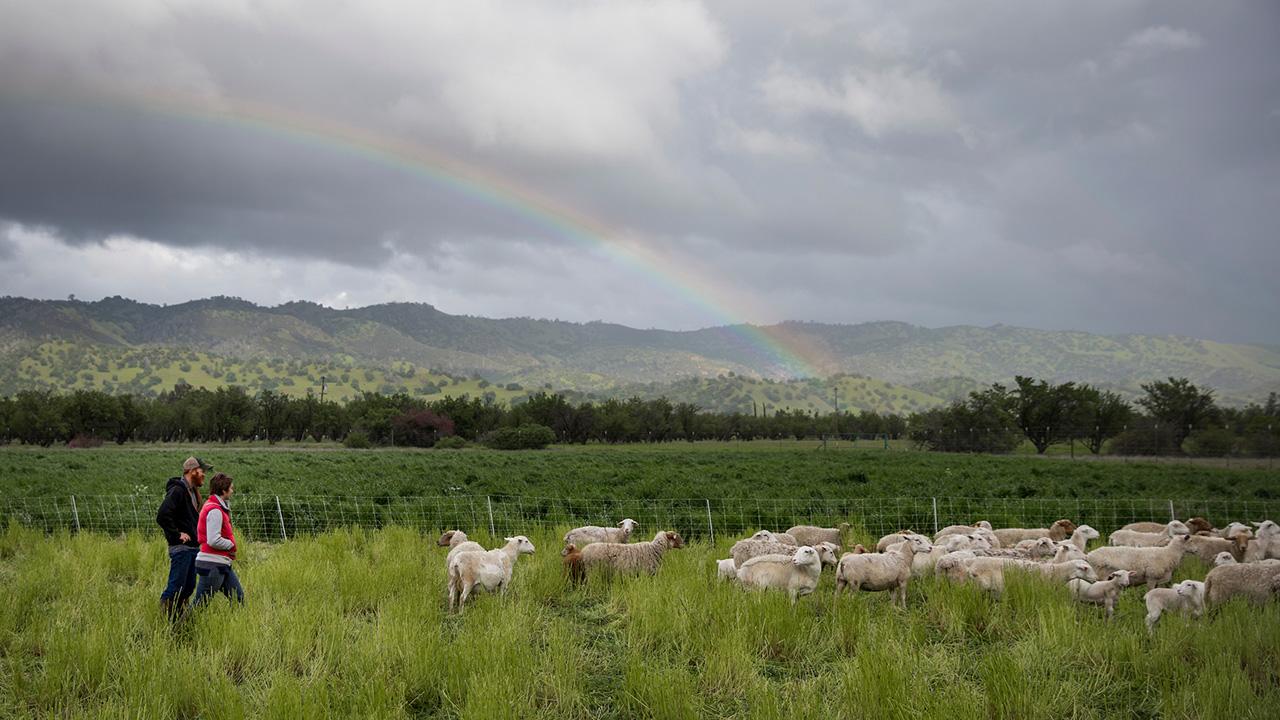
California’s response to climate change offers a model for the world
Gaudin: “Bold measures urgently needed” for agriculture to face crisis

Some folks criticize California’s approach to agriculture and the environment, but the scoffers should sit up and pay attention, according to a special edition of the Proceedings of the National Academy of Sciences, which went live today.
The state’s diverse landscapes and people make its experiences with intertwined environmental issues a valuable model for the nation and the world, PNAS editors concluded. The proactive and innovative approaches taken by growers, scientists and policy makers -- their successes as well as their failures -- offer crucial lessons as people try to figure out how to produce enough food while temperatures warm, water runs scarcer, ecosystems wither, sea levels rise, land and labor get costlier and populations grow.
Warning: That process forebodes conflicts over who gets to use resources, especially water, wrote a team of scientists that included Amelie Gaudin, an associate professor in the UC Davis Department of Plant Sciences who holds the Endowed Chair in Agroecology. For instance, do growers get that precious liquid for business-as-usual crop systems?
The researchers see a benefit in confronting these challenges: They drive innovation. As a result, California is poised to take strong steps to support farming amid inter-connected problems made worse by climate change. And, agricultural systems can still produce more food even while improving and sustaining soil, water, air and local ecosystems.
Gaudin and colleagues from UC Merced, Riverside and Los Angeles contributed to the PNAS special edition with a paper focusing on how state agriculturalists can adapt to increasingly volatile water supplies. Rising temperatures are reducing snowpack (the West’s biggest wintertime water reservoir), shifting rainfall and run-off patterns, increasing evaporation and making crops thirstier, all while non-agricultural users ramp up their own demands.
Their roadmap for navigating this crisis is among many articles in the PNAS special edition taking deep dives into sustainability amid climate change in California.
“Though climate change presents a more variable and uncertain future, it provides opportunities to adapt agricultural landscapes to better steward the environment,” Gaudin and team concluded. However, “Bold measures are urgently needed.”
Shift, diversify crops to conserve water, benefit the landscape

One solution among many is for growers to adapt how they design their cropping systems to the new normal. For example, winter crops nourished by rainfall can be profitable with little or no irrigation.
These crops “may present an opportunity for maintaining agricultural lands in production while reducing the agricultural water footprint,” Gaudin wrote.
Another pathway is diversification of crops and non-crop elements, turning farmland into a more regenerative, human-engineered ecosystem, Gaudin added. Diverse agricultural systems can build resilience to an uncertain water future while plants store carbon in the soil, support helpful wildlife such as pollinating insects and perform important beyond growing food, such as holding moisture in the soil, filtering water and dampening dust.
Toward that goal, adapting to climate change implies changes in planting schedules, where crops are located, varieties planted and irrigation methods, Gaudin wrote.
To promote such changes ̶ and do it fast ̶ policy needs to keep up with reality. People need to form better, stronger networks and coordinate their actions. State procedures need to become more agile, Gaudin and team warned.
Effective adaptations (to climate change) must go … toward food systems that address the market and social and ecological drivers,” they urged.
The scientists also point to other advances that will help in meeting the current challenges: The use of advanced climate predictions and new management techniques, recognizing the importance of the environment when deciding water use, implementing better monitoring of and response to extreme climate events, and promoting biological diversity as a source of resilience.
Related links
Read the paper by Gaudin and team, "Cultivating climate resilience in California agriculture: Adaptations to an increasingly volatile water future."
See the PNAS special edition on "Modeling Dynamic Systems for Sustainable Development."
Media Resources
- Trina Kleist, UC Davis Department of Plant Sciences, tkleist@ucdavis.edu, (530) 754-6148 or (530) 601-6846
